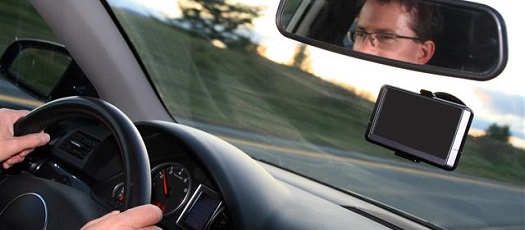By Michael McAlister
When you listen or talk on a phone while operating a vehicle:
- The capacity of the brain to process moving images decreases by as much as one-third.
- You can miss seeing up to 50 percent of what is around you while looking through your windshield.
- Your field of vision narrows.
SO… based on that information from the U.S. National Safety Council, take this pop quiz. You get in your vehicle and put your cell phone on hands-free or enable your vehicle to do that for you. Are you immune to the perils of distracted driving?
Correct answer: No!

Hands-free cell phone techniques help but only for short, simple verbal exchanges. However, they do not take into account complex conversations, as well as other activities people engage in when they drive that temporarily rob them of one of their hands. Eating, grooming, reading your map (and other materials!), adjusting mirrors ─ surely, you can add items to this list.
SO… You place your two hands on the wheel and keep them there. You crank up the motor and start to drive. Then you make or receive a hands-free business or personal call that is challenging in nature. Or you talk to your passenger(s) in the same vein. What happens? You lose concentration on the primary task ─ driving.
You need to do more than keep your hands on the steering wheel. To win the “war” on distracted driving, you need to keep your mind on the road at all times.
It is a “war.” We’re a multitasking society. We cram more and more activity into less and less time. That formula runs contrary to the rules of the road. Driving requires extreme focus. While driving, you should scan your mirrors every 10 seconds. That just doesn’t happen if, for example, you are driving and programming your GPS at the same time.
Understanding is key in preventing distracted driving.
Step One: Be aware of what can cause harm.
Step Two: Do the right thing.
Health and safety programs at Xerox
Health and safety is a value demonstrated through programs, emergency preparedness and maintaining strict standards.
Environment, health, safety and sustainability at Xerox: Learn how we align our goals for the environment, health and safety in five key areas to make an impact across our value chain worldwide.
Follow these tips from the U.S. National Safety Council
Before you drive:
- Develop a habit of turning off your cell phone when you get in your vehicle and turning it back on when you are done driving – if you can’t turn your phone off, put it on vibrate or silent mode.
- Put your cell phone in your trunk to avoid temptation – you can put it in your back seat too.
- Record a voice mail greeting telling callers it is not safe to make calls while driving, and you will return their call as soon as you are able.
- If you spend a lot of time on the road, organize your route and schedule in order to allow time to make and return phone calls from the parking lot of one location before leaving to drive to the next one.
While you drive:
- Do not make or answer cell phone calls, even with hands-free or dashboard infotainment systems.
- If you must make an emergency call, leave the road and park in a safe area.
- Do not send or read text messages or e-mail.
- If you are driving with a passenger, allow them to operate the phone – if you must make calls, let someone else drive.
- Focus on the road and enjoy cell phone-free driving.
This blog post and other sources of information on distracted driving pertain largely to cell phones. That’s because these devices are prevalent and our use of them is too. It’s also because the public has a misperception about hands-free vis-a-vis safety issues.
The U.S. National Safety Council asserts: “Hands-Free Is Not Risk-Free.” Stop using cell phones while driving. Recognize that multitasking compromises cognitive function. Do not engage in activities that require concentration while operating a vehicle. Share these facts. Take responsibility.
Ensure your safety, that of your family, and of others.
Links to More Information
For more information on distracted driving, refer to:
- Eyes on the Road – A Minute of Health with CDC [PODCAST 0:59 seconds]
- Eyes on the Road – A Cup of Health with CDC [PODCAST 04:43 minutes]
- Distracted Driving
- MMWR: Mobile Device Use While Driving — United States and Seven European Countries, 2011
- World Health Organization ─ Mobile Phone Use: A Growing Problem of Driver Distraction
- Distracted Driving Information & Guidance from sr22insurance.net
Michael McAlister is safety manager at Xerox, based in the Greater Los Angeles area. He provides Environmental, Health & Safety support to the technical services operations team throughout the Western half of the U.S.

